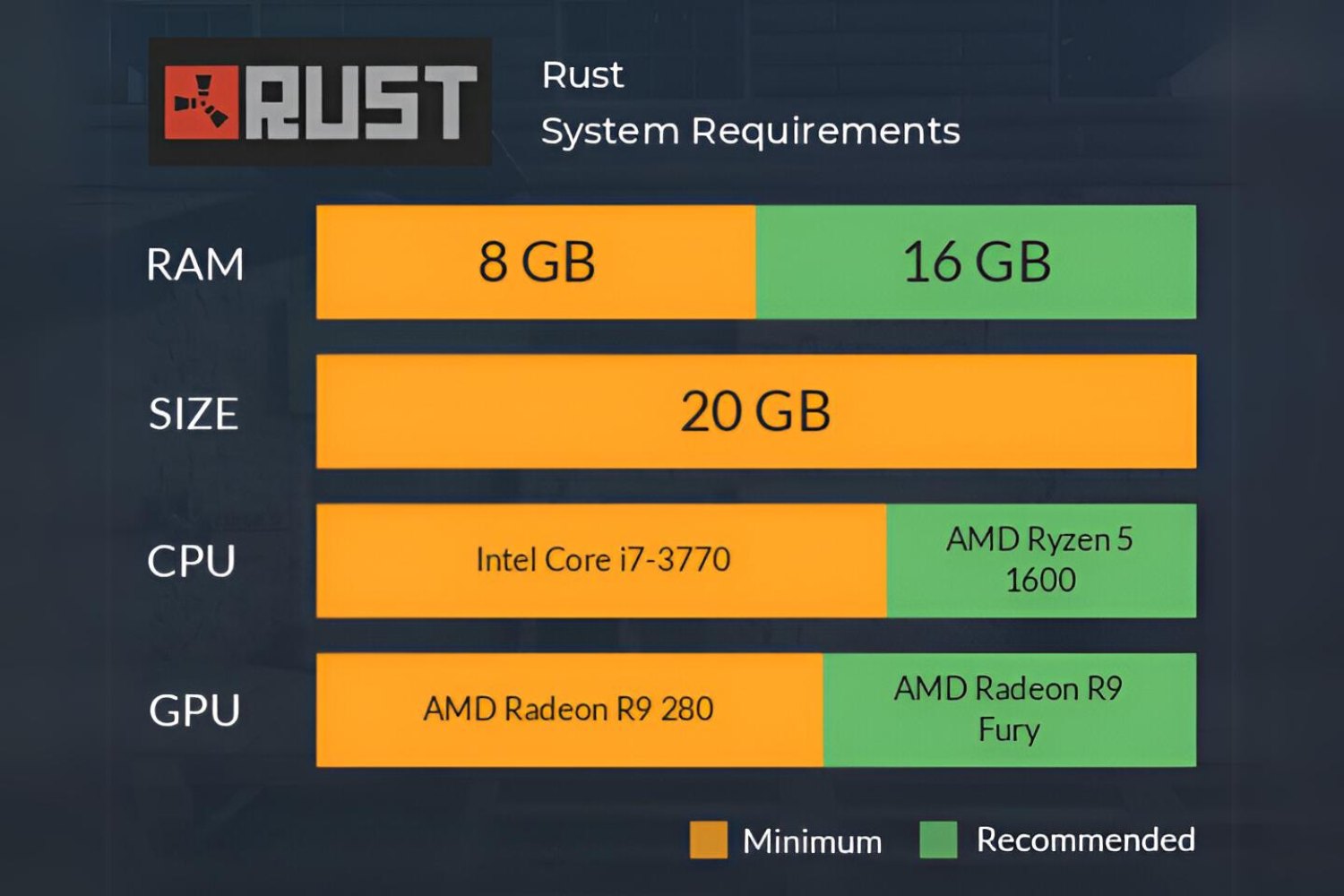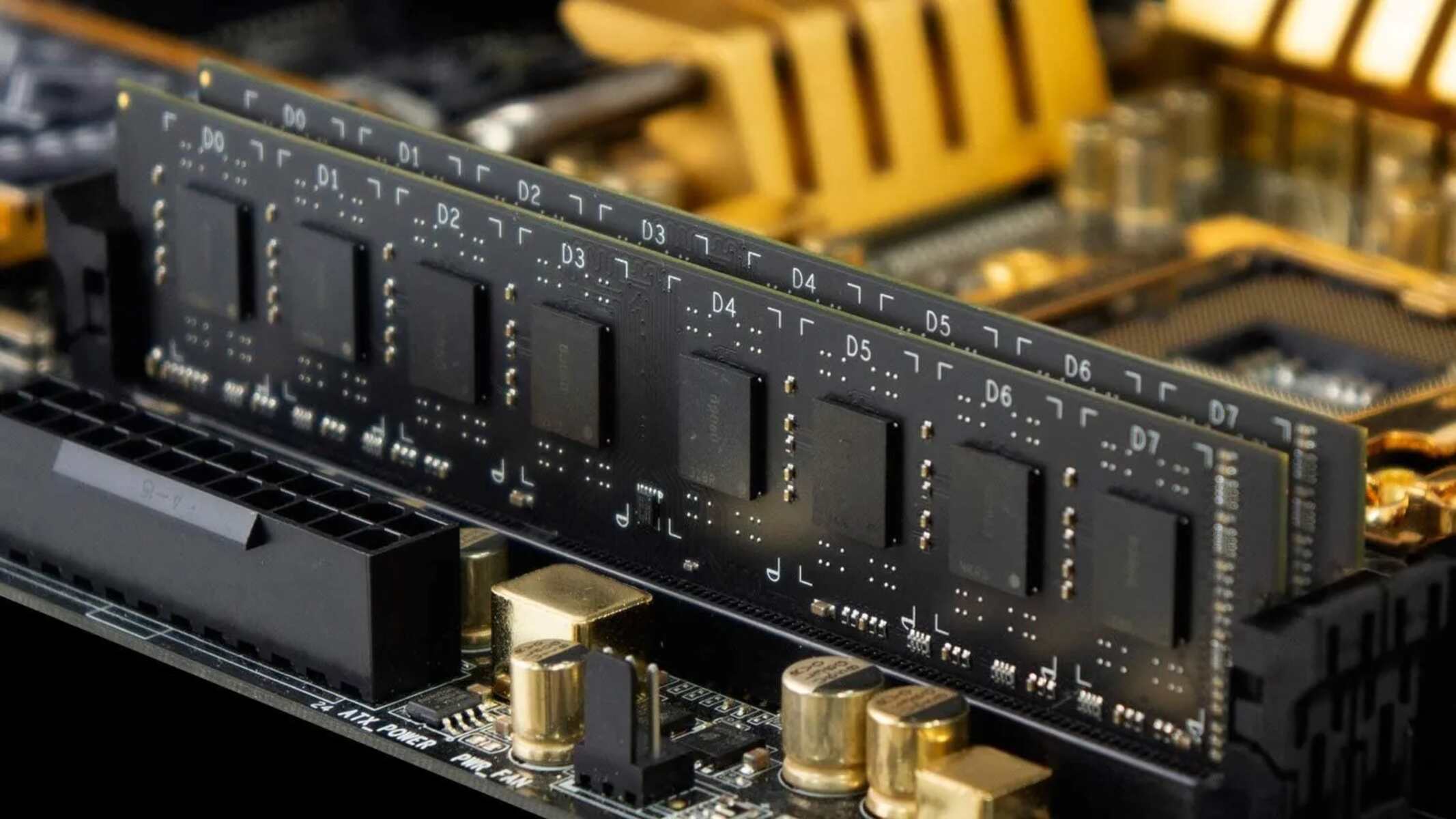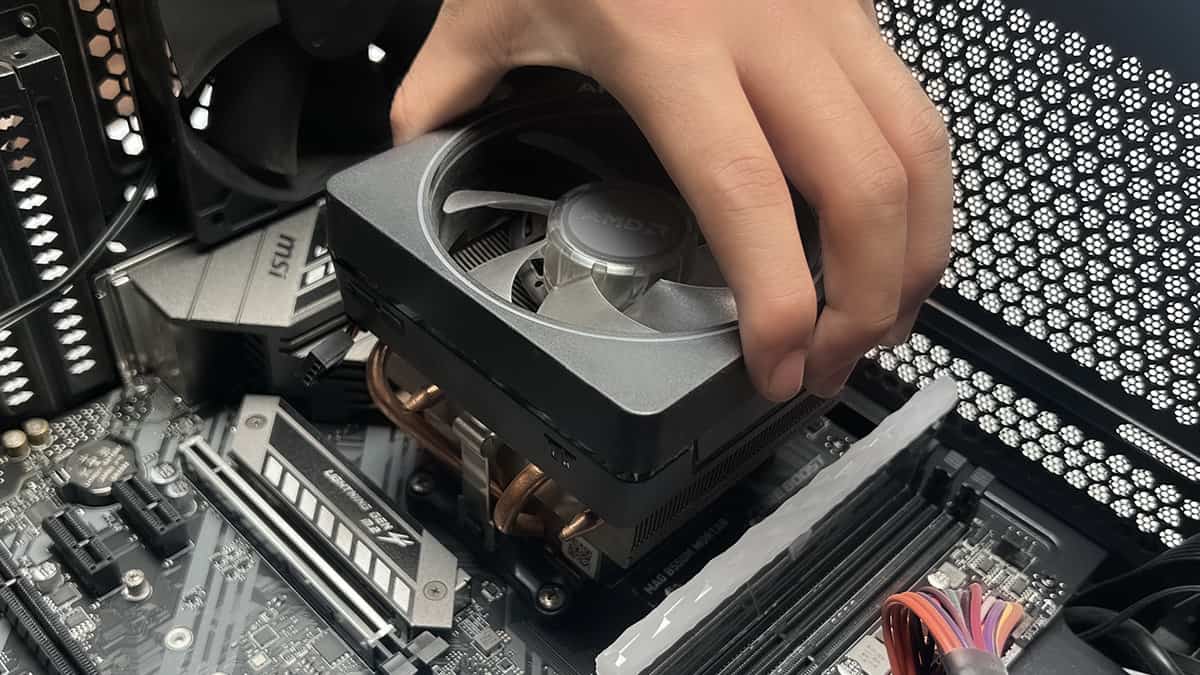Introduction
Rust is a modern systems programming language known for its performance, control, and safety guarantees. Developed by Mozilla Research, Rust is gaining popularity among developers for its ability to write fast and reliable code. Whether you are building a small application or a large-scale system, understanding the hardware requirements is crucial to ensure a smooth and efficient development process.
One important consideration when working with Rust is the amount of RAM (Random Access Memory) needed for both building and running your code. RAM plays a crucial role in the execution of programs, as it acts as a temporary storage for data and instructions. Insufficient RAM can lead to slower compile times, performance issues, and even crashes.
In this article, we will delve into the topic of RAM requirements for running Rust, exploring both the minimum and recommended amounts needed. Additionally, we will discuss the factors that can influence RAM usage in Rust and provide some useful tips for optimizing RAM usage in your Rust projects.
What is Rust?
Rust is a powerful systems programming language that focuses on performance, reliability, and safety. It was created by Mozilla Research and has gained considerable traction in the development community for its unique features and benefits. Unlike other programming languages, Rust offers a set of tools and concepts that make it easier to write and maintain efficient code.
One of the key features of Rust is its focus on memory safety. Traditional programming languages like C and C++ allow developers to manually manage memory, which can lead to common issues like null pointer errors, buffer overflows, and data races. Rust, on the other hand, employs a strict set of rules and conventions that prevent such errors at compile-time. This helps developers write safer and more reliable code, reducing the chances of bugs and vulnerabilities.
Another notable feature of Rust is its emphasis on performance. Rust programs are compiled into machine code, resulting in highly optimized and efficient executables. The language’s borrow checker ensures that there are no data races or unnecessary memory allocations, allowing for faster and more predictable performance. Additionally, Rust’s lightweight runtime and minimal runtime overhead make it an excellent choice for resource-constrained systems and performance-critical applications.
Rust also offers excellent tooling and package management through the Cargo ecosystem. Cargo simplifies the process of building, testing, and managing dependencies in Rust projects, providing a seamless and reliable development experience. The extensive crate repository allows developers to easily find and use libraries for various purposes, further enhancing productivity.
In summary, Rust is a modern systems programming language that combines memory safety, performance, and productivity. It provides features and tools that make it easier to write reliable and efficient code, making it a preferred choice for projects that require high performance and security.
RAM Requirements for Building Rust
When it comes to building Rust code, the amount of RAM required can vary depending on the size and complexity of your project. Building refers to the process of transforming your source code into an executable binary. The build process involves several steps, including parsing, compiling, and linking, all of which can consume significant amounts of RAM.
For smaller projects or simple applications, you may need a minimum of 2GB of RAM to successfully build your code. This should be sufficient for basic development tasks and compiling small codebases. However, larger projects with many dependencies and complex code may require more RAM to ensure smooth and efficient compilation.
As a general rule of thumb, the recommended amount of RAM for building Rust projects is at least 4GB. This allows for faster compilation times and reduces the chances of encountering memory-related issues during the build process. Having more RAM available can also help mitigate the impact of memory-hungry build processes and allow for multitasking without significant performance degradation.
It’s worth noting that the RAM requirements can increase significantly if you are working on a project with a large number of dependencies or if you are building the code in parallel. Rust’s build system, Cargo, supports parallel builds, which can speed up the compilation process by utilizing multiple CPU cores. However, parallel builds can also consume more RAM, so it’s important to have enough memory available to support this feature if you decide to enable it.
In addition to the amount of RAM, the speed and efficiency of your computer’s CPU and storage can also impact the build process. A faster CPU and solid-state drive (SSD) can help reduce compile times and improve overall development productivity. If you frequently work on large Rust projects, consider investing in hardware upgrades to optimize the build process further.
RAM Requirements for Running Rust
Once you have successfully built your Rust code, the next consideration is the amount of RAM required to run it efficiently. When running Rust binaries, the RAM requirements typically depend on the specific application or program being executed. Factors such as the complexity of the code, the amount of data being processed, and the number of concurrent tasks can all impact the RAM usage.
For simple Rust applications, such as command-line tools or small utilities, a minimum of 1GB to 2GB of RAM should be sufficient. These applications typically have minimal memory requirements and can run smoothly on most modern systems with limited resources. However, it’s important to note that the RAM usage may increase depending on the amount of data being processed and the overall performance demands of the application.
For more complex Rust programs, such as web servers, database systems, or large-scale applications, the RAM requirements can vary significantly. These applications often involve handling large datasets, managing multiple concurrent connections, and performing complex computations. As a result, it’s recommended to have a minimum of 4GB to 8GB of RAM available to ensure optimal performance.
In scenarios where you need to run multiple Rust applications simultaneously, the total RAM requirement will be the sum of the individual application requirements. For example, if you plan to run two Rust applications, each requiring 2GB of RAM, you would need at least 4GB of system RAM to accommodate both applications without performance degradation.
Furthermore, keep in mind that certain factors, such as third-party libraries and frameworks used in your Rust projects, can also contribute to increased RAM usage. It’s essential to monitor and profile your application’s memory usage to identify any potential bottlenecks and optimize accordingly.
Lastly, it’s worth noting that the RAM requirements for running Rust applications can vary based on the operating system and any platform-specific considerations. Different operating systems may have their own memory management algorithms and overhead, which can impact the effective RAM usage of your Rust programs.
By understanding the expected RAM requirements for running your Rust code and considering the specific needs of your application, you can ensure that your program runs smoothly and efficiently, providing a seamless experience for your users or clients.
Factors Affecting RAM Usage in Rust
The amount of RAM required by a Rust program can be influenced by several factors. Understanding these factors can help you optimize your code and efficiently manage your system resources. Here are some key factors that affect RAM usage in Rust:
1. Data Structures: The choice and design of data structures in your Rust program can have a significant impact on RAM usage. Using large, complex data structures or allocating unnecessary memory can increase the memory footprint. It’s important to carefully analyze your data requirements and choose the most efficient data structures for the task at hand.
2. Concurrency and Parallelism: Rust’s concurrency model allows for efficient multi-threading and concurrent execution. However, managing multiple threads or asynchronous tasks can increase the memory requirements of your program. Be mindful of the number of concurrent tasks and ensure that your code handles synchronization and memory management effectively to avoid excessive RAM usage.
3. Resource Management: Properly managing resources, such as file handles or network connections, is crucial to avoid resource leaks and unnecessary memory usage. Carelessly holding onto resources or inefficiently handling them can result in increased RAM usage. Implementing proper resource management practices, such as closing files or releasing connections when they are no longer needed, can help reduce RAM consumption.
4. Library and Framework Usage: Third-party libraries and frameworks used in your Rust project can also impact RAM usage. Some libraries may introduce additional overhead or require additional memory for their functionalities. It’s important to review the documentation of the libraries and frameworks you use and ensure that you are aware of their memory requirements.
5. Memory Optimization Techniques: Rust provides various memory optimization techniques, such as using references, borrowing, and lifetimes. By leveraging these features effectively, you can minimize unnecessary copying and allocation of memory, resulting in lower RAM usage. It’s crucial to understand and apply these techniques in your code to optimize memory usage.
6. Compiler Optimization: The Rust compiler applies various optimizations to your code, including memory optimizations. Enabling optimization flags during the compilation process can help reduce the memory footprint of your program. Experimenting with different optimization settings and analyzing the resulting binary’s RAM usage can lead to significant improvements.
By considering these factors and adopting best practices in memory management, data structure choice, and resource handling, you can effectively manage and optimize RAM usage in your Rust programs. It’s important to profile and benchmark your code to identify any potential bottlenecks and areas for improvement.
Tips to Optimize RAM Usage in Rust
Optimizing RAM usage in your Rust projects can improve performance, reduce memory footprint, and ensure efficient resource management. Here are some tips to help you optimize RAM usage in Rust:
1. Use Data Structures Wisely: Choose the appropriate data structures for your application’s needs. Consider the trade-offs between memory usage and performance. Use collections that consume less memory, like vecs instead of hash maps, when possible. Additionally, explore alternatives like arenas or custom memory allocators for fine-grained control over memory allocation.
2. Minimize Unnecessary Data Copies: Rust’s ownership model allows you to pass references to data rather than making unnecessary copies. Carefully consider how you transfer ownership or share data between different parts of your code. Passing references instead of cloning data can significantly reduce RAM usage.
3. Optimize Memory Allocation: Avoid unnecessary memory allocations by reusing memory wherever possible. For example, use fixed-size arrays instead of dynamically allocating memory for small, known-sized collections. Rust’s arrays and slices allow you to work directly with existing memory without incurring additional allocations.
4. Implement Lazy Loading: If your application deals with large datasets, consider using lazy loading techniques. Load data into memory only when it is needed, rather than loading everything upfront. This can significantly reduce the initial RAM usage and improve performance by loading data on-demand.
5. Profile and Benchmark: Regularly profile your application to identify memory hotspots and bottlenecks. Rust provides tools like profilers and memory allocators that can help you analyze the memory usage of your program. Use this information to identify and optimize areas where excessive RAM usage occurs.
6. Release Unused Resources: Ensure that you release any resources or memory that is no longer needed. Properly managing file handles, network connections, and other resources can prevent memory leaks and optimize RAM usage. Close files, release connections, and deallocate memory as soon as they are no longer required.
7. Use Compiler Optimization Flags: Take advantage of Rust’s compiler optimization flags to reduce the memory footprint of your program. Experiment with different optimization levels and measure the impact on RAM usage. Be aware that higher optimization levels may result in longer compilation times, so find the right balance for your project.
8. Limit Concurrency when Possible: While Rust’s concurrency features are powerful, excessive parallelism can increase RAM usage. Evaluate if all tasks need to run in parallel and consider reducing concurrency if unnecessary. This can help to minimize memory consumption and improve overall performance.
By applying these optimization tips and adopting efficient memory management practices, you can significantly reduce RAM usage in your Rust projects. Regularly monitor and profile your application to ensure that your optimizations are effective and provide the desired performance improvements.
Conclusion
Understanding the RAM requirements for building and running Rust code is essential for ensuring optimal performance and efficient resource management. While the specific RAM needs can vary based on the size, complexity, and nature of your projects, there are some general guidelines to keep in mind.
When building Rust code, it is recommended to have at least 4GB of RAM to support faster compilation times and reduce the risk of memory-related issues. Larger projects with numerous dependencies may require even more RAM, especially when utilizing parallel builds. Additionally, having a faster CPU and SSD can further improve the build process efficiency.
For running Rust applications, the RAM requirements depend on the complexity of the program and the amount of data being processed. Simple applications may only need 1GB to 2GB of RAM, while more complex programs that handle large datasets may benefit from 4GB to 8GB of RAM. It’s important to consider the specific needs of your application and monitor RAM usage to ensure optimal performance.
Factors that can influence RAM usage in Rust include data structures, concurrency, resource management, library usage, memory optimization techniques, and compiler optimization. By using appropriate data structures, minimizing unnecessary copies, and optimizing memory allocation, you can reduce RAM usage and improve efficiency. It’s also crucial to profile and benchmark your code, release unused resources, and consider compiler optimization flags for further memory optimization.
By following these tips and best practices, you can optimize RAM usage in your Rust projects, resulting in improved performance, reduced memory footprint, and efficient resource management. Regularly monitoring and profiling your code will help identify areas for improvement and ensure that your optimizations are effective.
With a clear understanding of RAM requirements, and by implementing the appropriate strategies to optimize RAM usage, you can unlock the full potential of Rust and build high-performance, reliable applications.

























